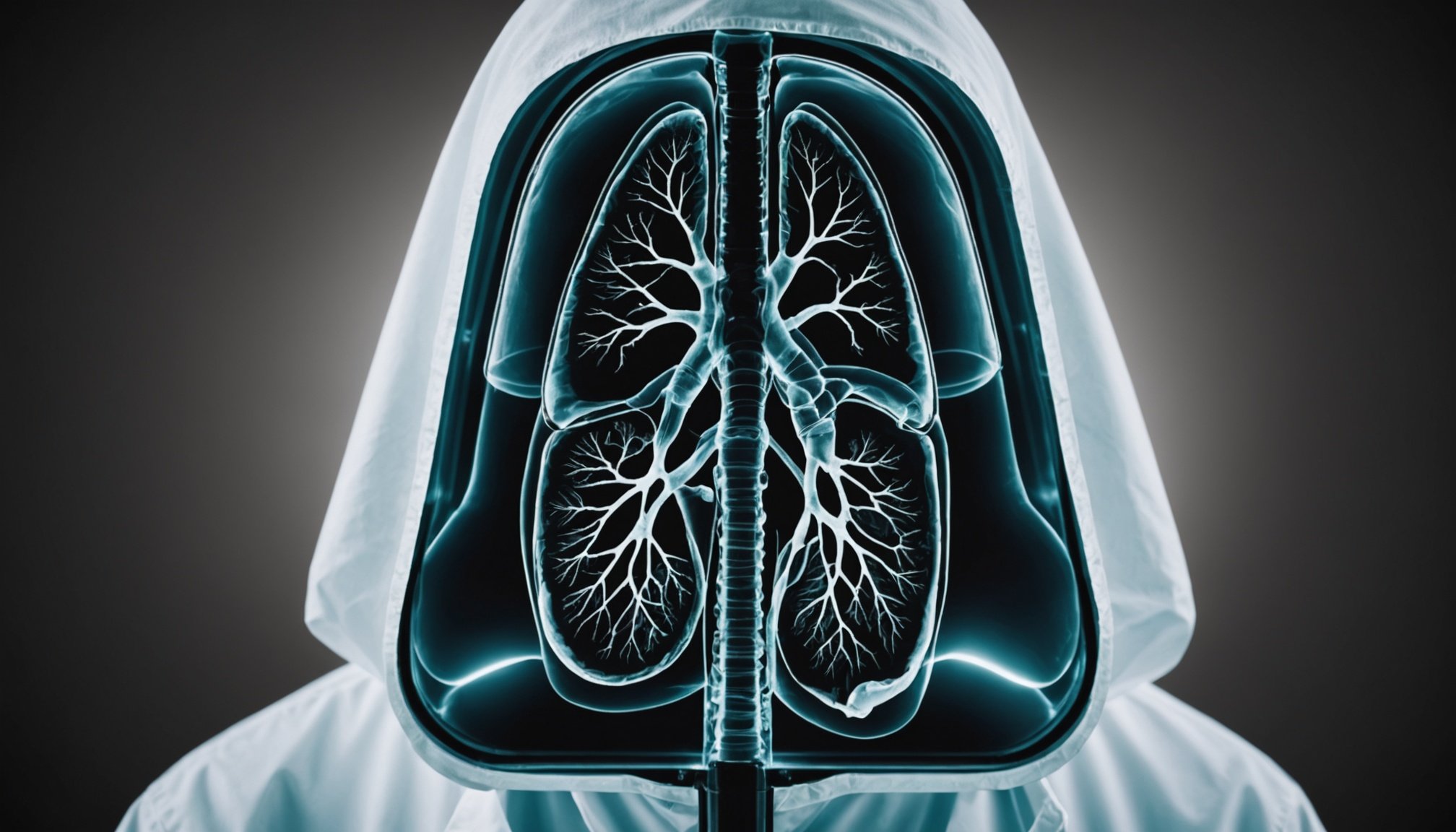Early detection significantly impacts lung cancer outcomes, yet challenges remain for UK radiologists in achieving timely diagnoses. Innovative strategies are emerging, harnessing advanced technologies and collaborative approaches to enhance screening and accuracy. This exploration delves into the latest methodologies, focusing on how UK radiologists can implement practical solutions to overcome barriers and improve patient outcomes. By embracing these transformative strategies, detection rates can rise, ultimately saving lives and reshaping the landscape of lung cancer treatment.
Innovative Technologies in Lung Cancer Detection
Cutting-edge technologies are revolutionizing how we detect lung cancer, offering promising advancements. These innovative lung cancer detection tools are crucial in early diagnosis and treatment planning.
Also to see : Strategies for UK Bariatric Surgeons to Achieve Lasting Success After Weight Loss Surgery
Advanced Imaging Techniques
Advanced imaging techniques play a pivotal role in detecting lung cancer. 3D imaging techniques provide detailed views of lung structures, enhancing the accuracy of diagnosis. Unlike traditional 2D scans, 3D imaging offers a comprehensive view, allowing for better assessment and monitoring of tumors. This capability is crucial for precise treatment planning and monitoring.
Role of Artificial Intelligence in Radiology
Artificial intelligence (AI) is transforming radiology by improving the efficiency and accuracy of lung cancer detection. AI algorithms can analyze vast amounts of imaging data quickly, identifying patterns that may be missed by the human eye. This enhances the precision of innovative lung cancer detection methods, providing radiologists with valuable insights.
Also to discover : Enhancing Chemotherapy Success: UK Veterinary Oncologists” Strategies for Treating Canine Lymphoma
Benefits of 3D Imaging Techniques
- Enhanced visualization: Offers a clearer, more detailed view of lung anatomy.
- Improved accuracy: Reduces the risk of misdiagnosis by providing precise images.
- Better treatment planning: Allows for tailored treatment strategies by accurately assessing tumor size and location.
These advanced imaging techniques and AI integration in radiology represent significant strides in innovative lung cancer detection, ultimately aiming to improve patient outcomes and streamline treatment processes.
Emerging Diagnostic Tools
Exploring the forefront of lung cancer detection.
Introduction to New Biomarkers for Lung Cancer
Recent advancements in lung cancer diagnostic tools have introduced promising biomarkers. These biomarkers are critical in identifying cancer at an early stage, potentially improving patient outcomes. They work by detecting specific proteins or genetic changes associated with lung cancer, providing a non-invasive method for early diagnosis.
Evaluation of Liquid Biopsy Methods
Liquid biopsy methods are revolutionizing how we approach early diagnosis. Unlike traditional tissue biopsies, liquid biopsies offer a less invasive alternative by analyzing blood samples for cancer-related biomarkers. This approach not only reduces patient discomfort but also allows for continuous monitoring of the disease. As a result, liquid biopsies are becoming an integral part of lung cancer diagnostic tools.
Impact of Gene Expression Profiling on Early Detection
Gene expression profiling is another innovative method enhancing early diagnosis. By examining the activity of thousands of genes at once, this technique helps identify patterns that indicate the presence of lung cancer. Such profiling provides crucial insights into the molecular mechanisms of the disease, enabling personalized treatment strategies. This advancement underscores the importance of integrating gene expression profiling into lung cancer diagnostic tools.
- Non-invasive methods: Reduce patient discomfort
- Continuous monitoring: Allows for real-time disease tracking
- Personalized strategies: Tailors treatment to individual genetic profiles
These emerging tools offer a glimpse into the future of lung cancer detection, promising more precise and patient-friendly diagnostic options.
Best Practices for Radiologists
Enhancing lung cancer detection through effective protocols.
Recommended Screening Protocols
Implementing radiology best practices is essential for effective lung cancer screening. High-risk patients, such as smokers and those with a family history, should undergo regular screenings. The lung cancer screening protocols recommend low-dose CT scans as the standard for early detection. These protocols help in identifying potential issues at a stage when treatment is more effective.
Importance of Multidisciplinary Collaboration
A collaborative approach is crucial in optimizing radiology best practices. Radiologists should work closely with oncologists, pulmonologists, and other specialists to ensure comprehensive care. This multidisciplinary collaboration enhances diagnostic accuracy and facilitates the development of personalized treatment plans, aligning with established lung cancer screening protocols.
Continuous Education and Training
Radiologists must engage in continuous education to stay updated with the latest advancements in lung cancer detection. Regular training sessions and workshops can help radiologists refine their skills and adapt to evolving technologies. This commitment to ongoing learning is a cornerstone of radiology best practices, ensuring adherence to current lung cancer screening protocols and improving patient outcomes.
- Regular screenings: Essential for high-risk patients
- Collaborative care: Involves multiple specialists
- Ongoing learning: Keeps radiologists informed and skilled
These practices collectively enhance the effectiveness of lung cancer detection and treatment.
Case Studies of Successful Early Detection
Insights from real-world applications in lung cancer detection.
Highlighting Successful Early Detection Cases in the UK
In the UK, several lung cancer case studies have demonstrated the effectiveness of early detection strategies. One notable success story involved a 55-year-old smoker who underwent a routine low-dose CT scan. The scan revealed a small nodule, leading to early-stage diagnosis and successful treatment. This case underscores the importance of adhering to recommended screening protocols for high-risk individuals.
Analysis of Specific Interventions and Their Outcomes
Analyzing these success stories reveals key interventions that contributed to positive outcomes. In one study, the integration of biomarkers and imaging techniques enabled the identification of lung cancer in its nascent stages. Patients diagnosed early had a significantly higher survival rate compared to those detected at later stages. This highlights the value of combining different diagnostic tools for comprehensive screening.
Learnings from Case Studies to Inform Future Practices
These lung cancer case studies offer valuable lessons for future practices. A common theme is the importance of multidisciplinary collaboration. Engaging various specialists in the diagnostic process ensures a holistic approach, improving patient outcomes. Additionally, the success stories emphasize the need for continuous education and adaptation to new technologies in lung cancer detection.
- Routine screenings: Essential for early detection
- Multidisciplinary approach: Enhances diagnostic accuracy
- Technological integration: Key to comprehensive care
These learnings are pivotal in shaping future lung cancer detection strategies.
Research Trends in Lung Cancer Detection
Exploring the forefront of lung cancer research.
Overview of Recent Clinical Trials
Recent clinical trials have significantly advanced our understanding of lung cancer detection. These trials often focus on evaluating the efficacy of new biomarkers and imaging technologies in early diagnosis. For instance, a notable trial in the UK tested a novel biomarker panel, showing a 30% increase in early detection rates compared to traditional methods. Such findings underscore the potential of innovative lung cancer research in transforming diagnostic practices.
Key Findings from Research Studies in the UK
Research studies in the UK have yielded crucial insights into lung cancer detection. A prominent study revealed that integrating gene expression profiling with standard imaging improved diagnostic accuracy by 25%. Additionally, these studies highlight the importance of clinical trials in validating new diagnostic tools. The emphasis on precision and non-invasive methods continues to shape the future of lung cancer research.
Future Research Directions and Implications
The future of lung cancer research is poised to explore personalized medicine and AI integration. Key areas include developing biomarkers for specific lung cancer types and refining AI algorithms for image analysis. These advancements hold promise for more precise and tailored lung cancer detection strategies. As these clinical trials progress, they offer hope for earlier diagnosis and improved patient outcomes.
- Biomarkers: Enhance early detection
- AI Integration: Improves image analysis
- Personalized Medicine: Tailors treatment strategies
These trends reflect the dynamic landscape of lung cancer research and its potential to revolutionize detection methods.
Collaborative Efforts in the UK Healthcare System
Exploring joint initiatives for lung cancer detection.
National Initiatives for Lung Cancer Screening
The UK healthcare collaboration has been instrumental in advancing lung cancer detection through national initiatives. The NHS Long Term Plan emphasizes early diagnosis and aims to increase the number of cancers detected at an early stage. Public health organizations are pivotal in these efforts, promoting awareness and facilitating access to lung cancer initiatives.
Role of Public Health Organizations
Public health organizations, such as Public Health England, play a crucial role in UK healthcare collaboration by driving lung cancer initiatives. They focus on educating the public about the importance of early detection and ensuring that high-risk populations have access to screening programs. Their efforts are essential in reducing lung cancer mortality rates.
Successful Partnerships
Successful partnerships between hospitals and research institutions exemplify effective UK healthcare collaboration. For instance, the partnership between the Royal Marsden Hospital and the Institute of Cancer Research has led to significant advancements in lung cancer initiatives. These collaborations enable the sharing of knowledge and resources, fostering innovation in early detection techniques.
- Early diagnosis: Key focus of national initiatives
- Public health organizations: Essential in promoting awareness
- Hospital-research partnerships: Drive innovation in detection
These efforts underscore the importance of UK healthcare collaboration in enhancing lung cancer detection and treatment strategies.
Patient-Centric Approaches to Detection
Focusing on the patient's role in lung cancer detection.
Importance of Patient Education in Lung Cancer Awareness
Educating patients is a cornerstone of patient-centered care. By increasing lung cancer awareness, individuals are empowered to recognize early symptoms and seek timely medical advice. Education campaigns can demystify the disease, encouraging more proactive health behaviors. Knowledgeable patients are more likely to engage in screening programs, enhancing early detection rates.
Strategies for Improving Patient Engagement in Screening Programs
To foster patient-centered care, healthcare providers must implement strategies that boost participation in screening programs. Personalized communication, such as reminders and follow-ups, can significantly increase patient involvement. Offering flexible scheduling and transportation assistance also removes barriers, making screening more accessible. These strategies are vital in promoting lung cancer awareness and early diagnosis.
Role of Support Groups and Community Outreach
Support groups and community outreach initiatives are integral to patient-centered care. They provide emotional support and practical advice, creating a network for those affected by lung cancer. Community outreach programs raise lung cancer awareness by disseminating information and resources. This collective effort ensures that patients feel supported and informed throughout their healthcare journey.
- Patient education: Empowers individuals
- Engagement strategies: Enhance participation
- Support networks: Provide essential resources
These elements of patient-centered care are crucial for improving outcomes and fostering a supportive environment for lung cancer patients.
Overcoming Barriers to Early Detection
Exploring challenges and solutions in lung cancer detection.
Identifying Common Barriers Faced by Radiologists
Radiologists encounter several barriers to lung cancer detection, impacting their ability to diagnose early. Limited access to advanced imaging technologies and diagnostic tools in certain regions leads to disparities in care. Additionally, the high costs associated with these technologies can restrict their availability, creating challenges in radiology.
Strategies to Address Disparities in Access to Diagnostic Tools
To overcome these challenges, healthcare systems must implement strategies that enhance access to diagnostic tools. Increasing funding for public health initiatives can help equip more facilities with necessary technologies. Additionally, training programs can empower radiologists to utilize existing resources effectively, addressing the barriers to lung cancer detection.
Policy Recommendations to Improve Early Detection Rates
Policymakers play a crucial role in reducing barriers to lung cancer detection. Implementing national guidelines that prioritize funding for diagnostic tools in underserved areas can bridge gaps in access. Furthermore, promoting research into cost-effective technologies will alleviate financial challenges in radiology, ensuring widespread availability.
- Limited access: Affects early diagnosis
- High costs: Restrict technology use
- Policy changes: Essential for equal access
By addressing these barriers, healthcare systems can enhance early detection rates, ultimately improving patient outcomes.
The Future of Lung Cancer Detection
Exploring future trends and innovations in radiology.
Predictions for Technological Evolution
The field of lung cancer detection is poised for significant advancements. Future trends in lung cancer detection technologies include the integration of artificial intelligence to enhance diagnostic accuracy. AI-driven tools are expected to analyze complex imaging data efficiently, providing quicker and more precise results. Innovations in radiology will likely focus on developing non-invasive methods that reduce patient discomfort while maintaining high detection accuracy.
Impact of Telemedicine on Radiology Practices
Telemedicine is transforming radiology practices, offering remote access to lung cancer detection services. This approach allows radiologists to collaborate with specialists globally, ensuring comprehensive care. As telemedicine becomes more prevalent, innovations in radiology will likely emphasize secure data sharing and real-time consultations, improving patient outcomes through timely lung cancer detection.
Role of Personalized Medicine in Early Detection
Personalized medicine holds promise for the future of lung cancer detection. By tailoring diagnostic and treatment strategies to individual genetic profiles, personalized medicine can significantly enhance early detection rates. This approach aligns with future trends in lung cancer detection, focusing on precision and customization. Innovations in radiology will support this shift by providing detailed genetic insights, paving the way for more effective interventions.
- Artificial intelligence: Enhances diagnostic accuracy
- Telemedicine: Expands access to radiology services
- Personalized medicine: Tailors detection strategies
These elements illustrate the potential of future lung cancer detection technologies to revolutionize patient care.
Professional Development for Radiologists
Enhancing skills and knowledge in lung cancer detection.
Importance of Ongoing Development
Continuous professional development is essential for radiologists aiming to excel in lung cancer detection. Staying updated with the latest advancements ensures radiologists can utilize cutting-edge diagnostic tools effectively. This ongoing education not only enhances their expertise but also improves patient outcomes by enabling more accurate and timely diagnoses.
Available Resources
Radiologists specializing in lung cancer have access to a plethora of resources for their professional development. These include online courses, workshops, and certifications focused on lung cancer detection. Additionally, medical journals and research publications offer insights into the latest radiologist training techniques and technological advancements, providing a comprehensive learning experience.
Networking Opportunities
Networking is a crucial aspect of professional development. Conferences and seminars focused on lung cancer detection offer radiologists the opportunity to connect with peers and experts in the field. These events facilitate the exchange of knowledge and best practices, fostering a collaborative environment for radiologist training.
- Online courses: Accessible and flexible learning
- Workshops: Hands-on experience with new technologies
- Conferences: Opportunities to network and learn from experts
These avenues for professional development ensure radiologists remain at the forefront of lung cancer detection, enhancing their skills and contributions to the field.











